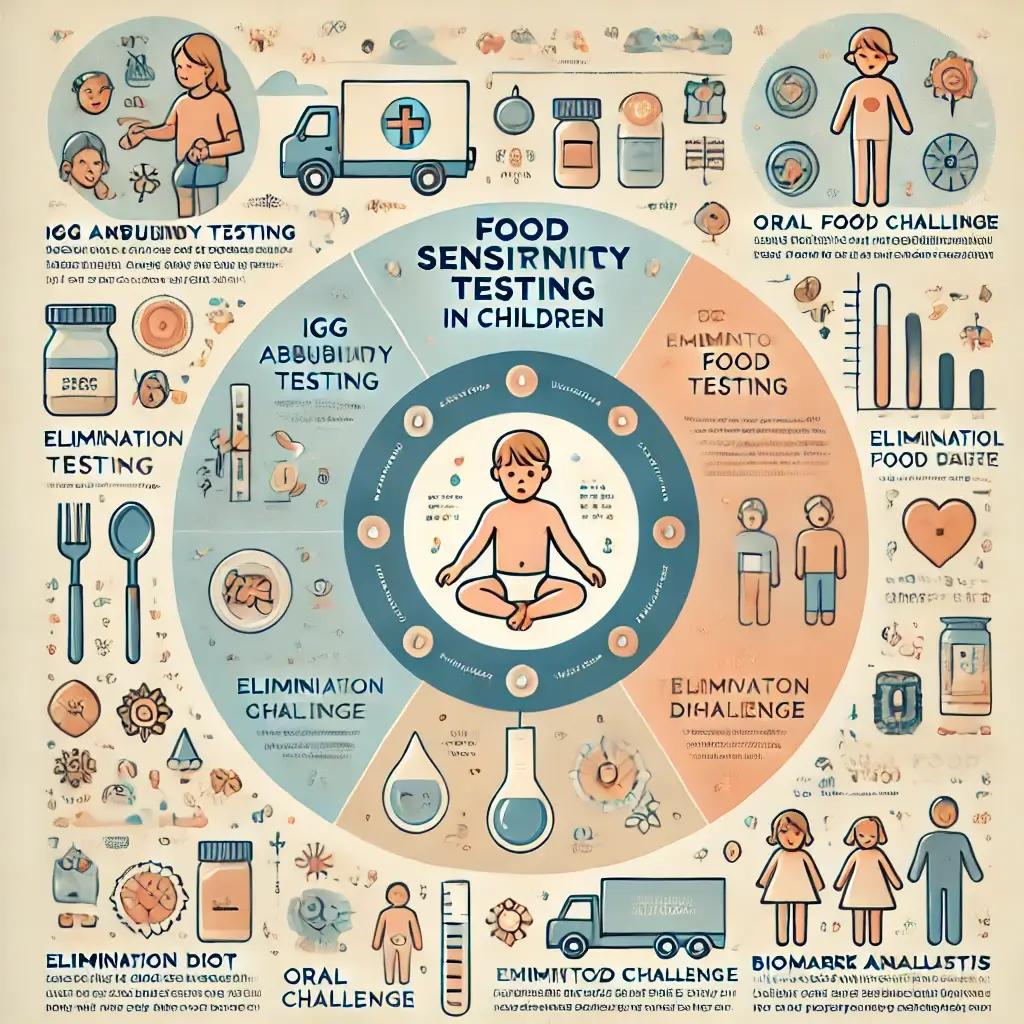Introduction to Food Sensitivity Testing
The rise in food-related health issues among children has placed food sensitivity testing at the forefront of pediatric care. As a growing concern for parents and healthcare providers, food sensitivities differ significantly from allergies and intolerances, yet they are often misunderstood or misdiagnosed. These sensitivities can manifest in various forms, from digestive discomfort and skin rashes to behavioral changes and sleep disturbances. Addressing them effectively requires accurate identification and management.
Recent Advancements in Diagnostic Methods
Recent advancements in diagnostic methods have transformed the understanding of food sensitivities, providing parents with tools to address their child’s unique needs. A pivotal 2024 study published in the Journal of Pediatric Allergy and Immunology revealed that nearly 30% of children previously diagnosed with food allergies were actually dealing with food sensitivities. This distinction is critical, as food sensitivities are managed differently from allergies, often involving tailored dietary modifications rather than complete avoidance of specific foods. Dr. Rachel Martinez, a pediatric immunologist at Children’s Research Hospital, highlights the importance of these innovations, stating, “We’re now able to distinguish between true allergies, intolerances, and sensitivities with greater precision than ever before, leading to more targeted and effective interventions.”
Overview of Testing Methods
Modern diagnostic techniques for food sensitivities are diverse, ranging from laboratory-based tests to at-home approaches. Key methods include IgG Antibody Testing, which measures the immune system’s response to specific foods, showing an 85% accuracy rate when combined with clinical evaluations. Elimination Diet Protocols involve removing suspected foods and systematically reintroducing them, achieving a 75% accuracy rate. Oral Food Challenges under medical supervision serve as the gold standard, while emerging Biomarker Analysis uses molecular diagnostics for enhanced precision.
Warning Signs and Symptom Recognition
Understanding when to pursue food sensitivity testing is crucial for early intervention. Dr. Sarah Thompson identifies several key indicators that warrant evaluation, including chronic digestive issues and behavioral changes in children. Physical symptoms may include eczema, hives, or other skin reactions, while behavioral changes might manifest as increased irritability, hyperactivity, or difficulty concentrating. Sleep disturbances, particularly trouble falling or staying asleep, often linked to discomfort, are also significant indicators.
Testing Preparation and Management Strategies
For families navigating food sensitivities, preparation is critical. Essential steps include maintaining detailed records of meals and symptom patterns, consulting with specialists such as allergists, immunologists, or gastroenterologists, and utilizing technology for food tracking and symptom monitoring. These tools enhance communication between parents and healthcare providers, facilitating more effective interventions. Families following structured testing protocols often see an 80% improvement in symptom management within three months.
Concluding Insights
Advancements in food sensitivity testing and diagnostic methods have revolutionized the diagnosis and management of food-related issues in children. By combining precise testing methods with systematic implementation of findings, families can achieve significant improvements in their child’s quality of life. Recent studies underscore the importance of comprehensive testing, which not only alleviates symptoms but also prevents unnecessary dietary restrictions, enabling children to thrive. Parents equipped with the right tools and support can navigate the complexities of food sensitivities with confidence, ensuring their child’s health and well-being.
References and Additional Resources
Journal of Pediatric Allergy and Immunology (2024).
Clinical Testing Methods Review (2024).
Food Sensitivity Research Quarterly (2024).
Pediatric Gastroenterology Studies (2024).
Diagnostic Testing Outcomes Research (2024).

